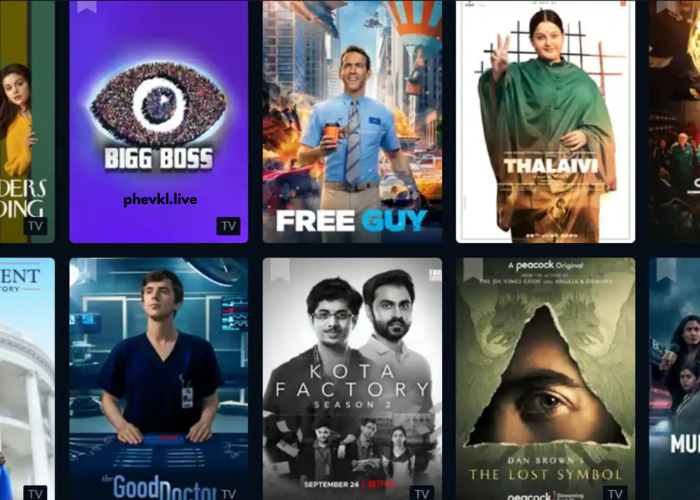
In today’s fast-paced digital landscape, traditional business models are rapidly evolving. The emergence of advanced technologies, shifting consumer behaviors, and global connectivity has created fertile ground for innovative business models that are agile, data-driven, and customer-centric. Companies that embrace these modern frameworks not only gain a competitive edge but also future-proof their operations.
In this article, we will explore various innovative business models that are transforming the way businesses operate in the digital era. From platform-based strategies to subscription services and data monetization, discover how forward-thinking companies are reshaping industries worldwide.
The Digital Transformation Imperative
Embracing Change in a Disruptive World
The digital revolution has fundamentally altered how value is created and delivered. Businesses can no longer rely on legacy systems or static strategies. Instead, they must adopt new models that are scalable, adaptive, and rooted in technology.
Key Drivers of Innovation in Business Models
Several factors have contributed to the rise of innovative business models, including:
-
Rapid technological advancement
-
Increased mobile and internet penetration
-
Growing importance of data analytics
-
Evolving customer expectations
-
The rise of the gig and creator economies
These forces have encouraged organizations to break free from traditional molds and experiment with novel approaches to generating revenue and delivering value.
Platform-Based Business Models
Creating Ecosystems Over Products
One of the most impactful business innovations of the digital age is the platform model. Unlike traditional businesses that sell products or services, platform businesses facilitate exchanges between two or more user groups.
Examples of Platform Business Models
-
Uber and Lyft: Connect drivers with passengers
-
Airbnb: Connects property owners with travelers
-
Amazon and eBay: Connect sellers with buyers
-
Facebook and YouTube: Connect content creators with viewers and advertisers
These businesses focus on building ecosystems rather than owning the assets. This approach enables exponential scaling, high user engagement, and network effects.
Subscription-Based Business Models
The Rise of the “Subscription Economy”
Consumers are increasingly opting for access over ownership. This trend has given rise to subscription-based models, which offer products or services for a recurring fee. Subscriptions create a predictable revenue stream and enhance customer lifetime value.
Successful Subscription Examples
-
Netflix: Streaming video content
-
Spotify: Music streaming services
-
Adobe Creative Cloud: SaaS tools for professionals
-
Dollar Shave Club: Recurring delivery of grooming products
These businesses benefit from customer retention, upselling opportunities, and the ability to refine offerings based on usage data.
Freemium and Tiered Pricing Models
Offering Value Before Monetization
The freemium model allows users to access a basic version of a product for free, with premium features available at a cost. This approach is especially popular in the software and mobile app sectors.
Advantages of Freemium Models
-
Lower barrier to entry
-
Viral adoption and user growth
-
Opportunity for upselling
Examples: Dropbox, Canva, Trello, and Zoom all use the freemium strategy to build user bases and convert free users into paying customers over time.
On-Demand and Gig Economy Models
Flexibility and Convenience as a Value Proposition
The gig economy has redefined labor by enabling workers to take on flexible, short-term tasks. On-demand platforms capitalize on this model by connecting freelancers or service providers with customers in real time.
Key Characteristics
-
Variable workforce
-
Scalable supply and demand
-
App or web-based interfaces
Examples include: Upwork, Fiverr, TaskRabbit, Instacart, and Uber Eats. These businesses leverage real-time data and mobile technology to meet consumer needs instantly.
Data-Driven Business Models
Monetizing Information in the Digital Era
In the digital age, data is more valuable than oil. Businesses are increasingly adopting models that center around the collection, analysis, and monetization of data. These models help organizations personalize experiences, optimize operations, and drive innovation.
Data Monetization Strategies
-
Selling anonymized user data
-
Ad targeting based on behavioral data
-
Product development insights
-
Predictive analytics for business strategy
Companies like Google, Facebook, and Amazon thrive on data-driven models, leveraging user interactions to fuel advertising revenue and personalize services.
D2C (Direct-to-Consumer) Business Models
Cutting Out the Middleman
Direct-to-consumer models empower brands to sell directly to customers without relying on traditional retail or third-party distributors. This not only reduces costs but also fosters stronger relationships with consumers.
Benefits of D2C
-
Higher profit margins
-
Full control over brand messaging
-
Direct access to customer data
-
Faster feedback and product innovation
Examples: Warby Parker, Glossier, Allbirds, and Casper are D2C brands that have disrupted legacy retail by delivering personalized, online-first experiences.
Peer-to-Peer (P2P) Models
Decentralizing Trust and Commerce
Peer-to-peer models allow individuals to transact directly with each other, often facilitated by a digital platform that provides security, verification, and payment processing.
Popular P2P Use Cases
-
P2P Lending: Platforms like LendingClub allow individuals to lend and borrow money.
-
P2P Marketplaces: Etsy and Depop allow sellers to reach buyers directly.
-
P2P Sharing: Platforms like Turo or BlaBlaCar for sharing cars and rides.
These models promote decentralized economies and often tap into underutilized assets or resources.
Decentralized and Blockchain-Based Models
Trustless Transactions and Smart Contracts
Blockchain technology is ushering in a new wave of decentralized business models. These systems are transparent, secure, and operate without centralized authority.
Emerging Blockchain Models
-
DeFi (Decentralized Finance): Bypassing banks for lending and investing
-
NFTs and Digital Ownership: Monetizing digital art, collectibles, and IP
-
DAOs (Decentralized Autonomous Organizations): Democratized governance for businesses
Example Platforms: Ethereum, OpenSea, Uniswap, and Aragon are transforming how businesses and communities interact.
Sustainable and Circular Economy Models
Designing for Longevity and Environmental Impact
With growing awareness of climate change and resource depletion, businesses are adopting models focused on sustainability and the circular economy.
Key Components
-
Product-as-a-Service
-
Recycling and reusing resources
-
Reducing carbon footprint
Examples: IKEA’s furniture take-back programs, Patagonia’s Worn Wear resale model, and Loop’s zero-waste packaging system demonstrate how innovation can go hand-in-hand with responsibility.
Hybrid and Ecosystem-Based Models
Integrating Multiple Value Streams
Many businesses are now adopting hybrid models that combine elements of different strategies to maximize revenue and value delivery.
Case in Point: Apple
-
Hardware Sales (traditional model)
-
Subscription Services like Apple Music and iCloud
-
App Store (platform model)
-
Data integration across devices for seamless UX
This blend enables companies to create cohesive, multi-layered ecosystems that lock in users and generate diverse income streams.
How to Innovate Your Business Model
1. Understand Your Customer’s Evolving Needs
Use data, surveys, and behavioral analysis to track what your customers want and how they interact with your brand.
2. Leverage Technology
Adopt emerging tools such as AI, machine learning, cloud computing, and blockchain to streamline operations and enhance offerings.
3. Embrace Agile Thinking
Innovative business models thrive on iteration. Use design thinking, lean startup methods, and rapid prototyping to test ideas quickly.
4. Build Strategic Partnerships
Collaborate with tech firms, suppliers, or even competitors to create synergistic value that neither could achieve alone.
5. Focus on Scalability and Sustainability
Ensure that your model is not only innovative but also scalable and environmentally conscious. Long-term viability is key.
Challenges in Adopting New Business Models
Resistance to Change
Legacy businesses often face internal inertia that resists innovation. Training, cultural shifts, and leadership buy-in are necessary to overcome this.
Regulatory Hurdles
Some models, especially those involving data or blockchain, face unclear or evolving legal frameworks.
Technology Gaps
Lack of access to modern infrastructure or expertise can hinder transformation.
Customer Trust and Adoption
Innovative models often require users to change behavior. Building trust is essential, especially in sectors like finance or healthcare.
Future Trends in Business Model Innovation
AI-First Enterprises
AI will become central to operations, personalization, and decision-making. Business models will be built with artificial intelligence at their core.
Digital Twins and Metaverse Integration
Virtual replicas and immersive environments will offer new ways to deliver services and experiences.
Servitization of Products
More companies will transition from selling products to selling outcomes (e.g., “power by the hour” models in industrial sectors).
Embedded Finance and FinTech Integration
Expect more non-financial platforms to embed financial services directly within their ecosystems, creating seamless end-to-end journeys.
Conclusion
The digital age has redefined the boundaries of business. In this dynamic landscape, innovation is not optional—it is imperative. By adopting forward-looking business models such as platforms, subscriptions, freemium, P2P systems, and data-driven strategies, organizations can unlock new value and drive long-term success.
To thrive, companies must remain agile, technology-focused, and deeply connected to customer needs. The future belongs to businesses that dare to reinvent not just what they offer, but how they offer it.






